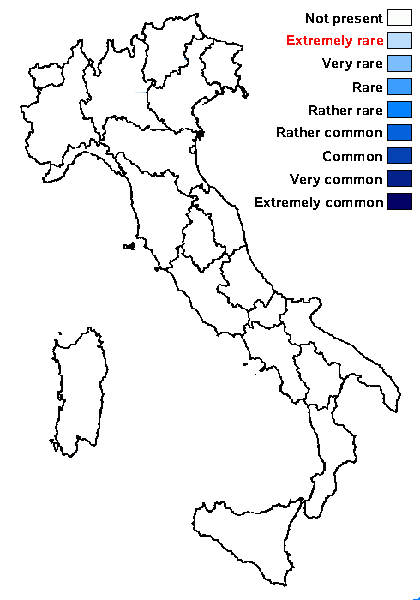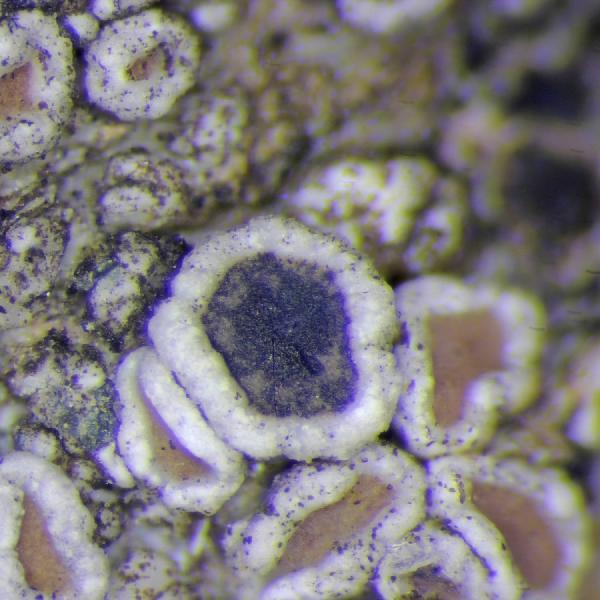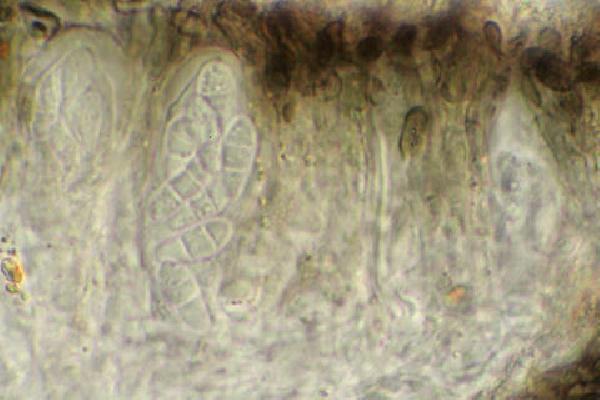Arthonia lecanoricola Alstrup & Olech
Fragmenta Flor. Geobot. (Kraków), 41, 2: 748, 1996.
Synonyms:
Distribution:
Description: Thallus inapparent, not lichenized, the hyphae developing inside the hymenia of Polyozosia-species, especially P. populicola. Apothecia developing on those of Piolyozosia-speies, causing up to 0.8 mm wide, irregularly rounded discolourations. Proper exciple not developed; epithecium poorly differentiated, brown to olivaceous brown, K- or K+ olivaceous green, N-; hymenium colourless to pale yellow-brown; paraphysoids c. 2 µm thick at mid-level, the apical cells brown, up to 2.5-3.5 µm wide; gelatinous matrix formed by asci and paraphysoids I+ red, K/I+ blue. Asci 8-spored, broadly clavate to saccate, semi-fissitunicate, with a large, non-amyloid apical dome, a distinct ocular chamber, Arthonia-type. Ascospores (1-)2(-3)-septate, hyaline, broadly clavate, 11-13 x 4-4.5(-5) µm (6-6.5 µm wide in the type material), the lower cell distinctly narrower and more cylindrical. Photobiont absent. Spot tests: K-, C-, KC-, P-. Chemistry: without lichen substances.Note: a parasite in the apothecia of Polyozosia species, especially P. populicola, known from a few localities in Central and Western Europe, but perhaps overlooked and more widespread. To be looked for in Italy.
Growth form: Lichenicolous fungus
Substrata: bark and rocks
Reproductive strategy: mainly sexual
paras Polyozosia

Predictive model
Growth form: Lichenicolous fungus
Substrata: bark and rocks
Reproductive strategy: mainly sexual
paras Polyozosia

Predictive model



